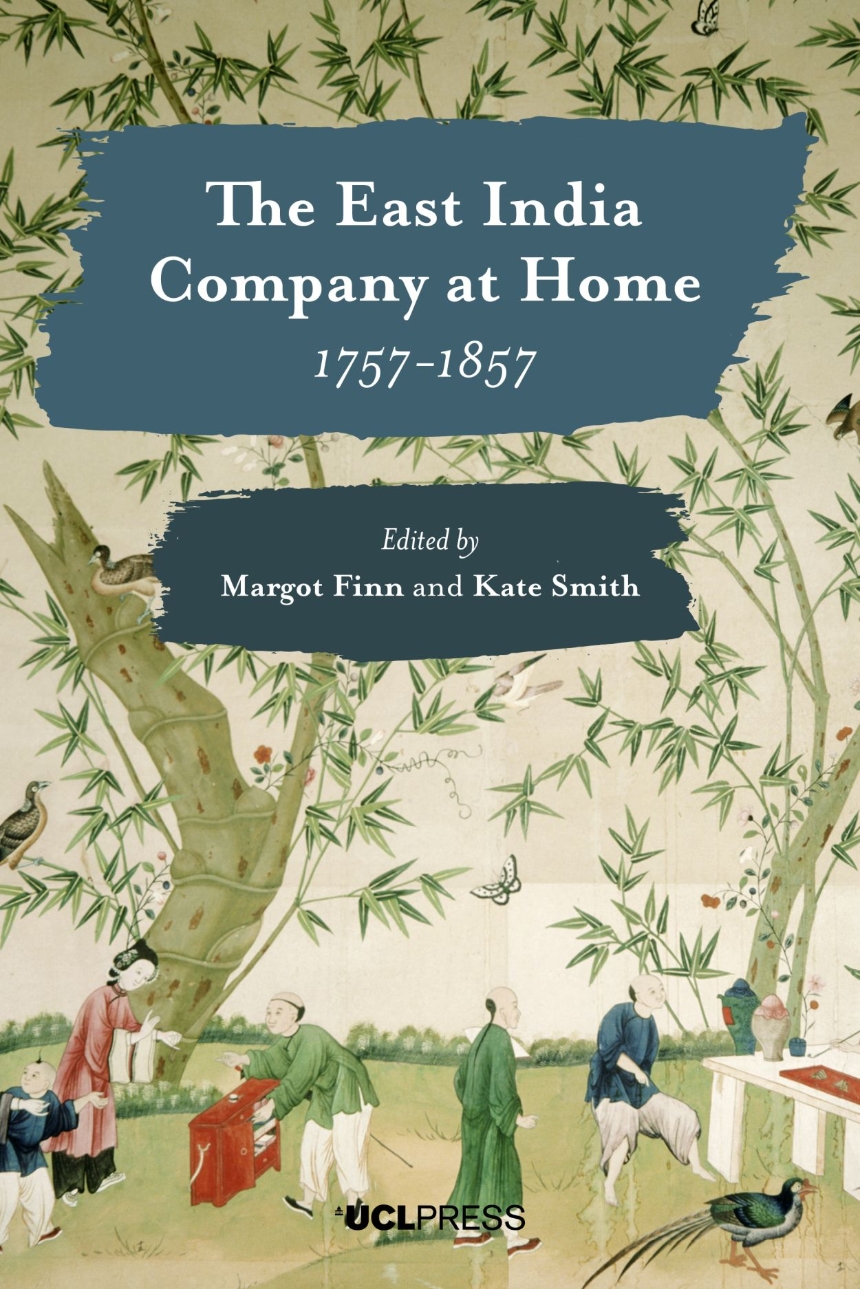Distributed for UCL Press
East India Company at Home, 1757-1857
In the century between 1757 and 1857, The East India Company brought both sizeable affluence and fresh perspective back home to Britain from the Indian subcontinent. During this period, the Company shifted its activities and increasingly employed civil servants, army officers, surveyors, and doctors, many of whom returned to Britain with newly acquired wealth, tastes, and identities. This new volume moves beyond conventional academic narratives by drawing on wider research, exploring how the empire in Asia shaped British country houses, thus contributing to the ongoing conversation on imperial culture and its British legacies.
500 pages | 99 illustrations | 6.14 x 9.21 | © 2018
Free digital open access editions are available to download from UCL Press.
History: European History
Reviews
Table of Contents
"Introduction
Margot Finn and Kate Smith
Section 1 The social life of things
1. Prize possession: the ‘silver coffer’ of Tipu Sultan and
the Fraser family
Sarah Longair and Cam Sharp Jones
2. Chinese wallpaper: from Canton to country house
Helen Clifford
3. Production, purchase, dispossession, recirculation:
Anglo-Indian ivory furniture in the British country house
Kate Smith
4. ‘A jaghire without a crime’: the East India Company and
the Indian Ocean material world at Osterley, 1700–1800
Yuthika Sharma and Pauline Davies
Section 2 Objects, houses, homes and the construction
of identities
5. Manly objects? Gendering armorial porcelain wares
Kate Smith
6. Fanny Parkes (1794–1875): female collecting and
curiosity in India and Britain
Joanna Goldsworthy
7. Refashioning house, home and family: Montreal Park,
Kent and Touch House, Stirlingshire
Margot Finn and Kate Smith
Section
3 The Home Counties: clusters and connections
8. Warfield Park, Berkshire: longing, belonging and
the British country house
Kate Smith
9. Englefield House, Berkshire: processes, practices and
the making of a Company house
Kate Smith
10. Swallowfield Park, Berkshire: from royalist bastion to
empire home
Margot Finn
11. Valentines, the Raymonds and Company material culture
Georgina Green
12. Growing up in a Company town: the East India
Company presence in South Hertfordshire
Chris Jeppesen
Section 4 On the borders: region, nation, globe
13. A fairy palace in Devon: Redcliffe Towers, built by
Colonel Robert Smith (1787–1873), Bengal Engineers
Diane James
14. Partly after the Chinese manner: ‘Chinese’ staircases
in north-west Wales
Rachael Barnwell
15. The intimate trade of Alexander Hall: salmon and
slaves in Scotland and Sumatra, c.1745–1765
Ellen Filor
16. Connecting Britain and India: General Patrick
Duff and Madeira
Alistair Mutch
Section 5 Company families and identities:
writing history today
17. The career of William Gamul Farmer (1746–1797)
in India, 1763–1795
Penelope Farmer
18. The Melvill family and India
David Williams
19. The Indian seal of Sir Francis Sykes: a tale of two families
Sir John Sykes
Conclusion
Margot Finn and Kate Smith "
Margot Finn and Kate Smith
Section 1 The social life of things
1. Prize possession: the ‘silver coffer’ of Tipu Sultan and
the Fraser family
Sarah Longair and Cam Sharp Jones
2. Chinese wallpaper: from Canton to country house
Helen Clifford
3. Production, purchase, dispossession, recirculation:
Anglo-Indian ivory furniture in the British country house
Kate Smith
4. ‘A jaghire without a crime’: the East India Company and
the Indian Ocean material world at Osterley, 1700–1800
Yuthika Sharma and Pauline Davies
Section 2 Objects, houses, homes and the construction
of identities
5. Manly objects? Gendering armorial porcelain wares
Kate Smith
6. Fanny Parkes (1794–1875): female collecting and
curiosity in India and Britain
Joanna Goldsworthy
7. Refashioning house, home and family: Montreal Park,
Kent and Touch House, Stirlingshire
Margot Finn and Kate Smith
Section
3 The Home Counties: clusters and connections
8. Warfield Park, Berkshire: longing, belonging and
the British country house
Kate Smith
9. Englefield House, Berkshire: processes, practices and
the making of a Company house
Kate Smith
10. Swallowfield Park, Berkshire: from royalist bastion to
empire home
Margot Finn
11. Valentines, the Raymonds and Company material culture
Georgina Green
12. Growing up in a Company town: the East India
Company presence in South Hertfordshire
Chris Jeppesen
Section 4 On the borders: region, nation, globe
13. A fairy palace in Devon: Redcliffe Towers, built by
Colonel Robert Smith (1787–1873), Bengal Engineers
Diane James
14. Partly after the Chinese manner: ‘Chinese’ staircases
in north-west Wales
Rachael Barnwell
15. The intimate trade of Alexander Hall: salmon and
slaves in Scotland and Sumatra, c.1745–1765
Ellen Filor
16. Connecting Britain and India: General Patrick
Duff and Madeira
Alistair Mutch
Section 5 Company families and identities:
writing history today
17. The career of William Gamul Farmer (1746–1797)
in India, 1763–1795
Penelope Farmer
18. The Melvill family and India
David Williams
19. The Indian seal of Sir Francis Sykes: a tale of two families
Sir John Sykes
Conclusion
Margot Finn and Kate Smith "

